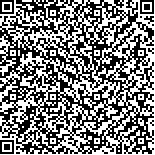李蔷,刘晓华,刘克敏.等速肌力训练在肩袖修补术后康复中的作用[J].中华物理医学与康复杂志,2020,42(2):156-160
扫码阅读全文

|
| 等速肌力训练在肩袖修补术后康复中的作用 |
|
| |
| DOI:DOI:10.3760/cma.j.issn.0254-1424.2020.02.016 |
| 中文关键词: 肩袖损伤 等速训练 康复 |
| 英文关键词: Rotator cuff injury Isokinetic training Rehabilitation |
| 基金项目: |
|
| 摘要点击次数: 6680 |
| 全文下载次数: 7650 |
| 中文摘要: |
| 目的 探讨等速肌力训练在关节镜下肩袖修补术后康复治疗中的作用。 方法 选取关节镜下小肩袖损伤修复术后3个月、患侧肩关节活动度正常且肩袖肌力达到3级及以上的患者共40例,按随机数字表法分为对照组(采用常规肌力训练治疗)和训练组(采用等速训练方法治疗),每组20例。2组患者均行Thera-Band弹力带肩关节内外旋肌力训练,每组10~20个,每日3次;训练组在常规肌力训练的基础上,增加肩关节内外旋等速肌力训练,每次15~20 min,每周2次。分别于术后3个月(训练前)和术后6个月(训练后),对2组患者均行等速肌力测试,测试速度分别为60°/s和180°/s。并分别对2组患者的患侧肩关节内外旋峰力矩、峰力矩体重比、患侧与健侧峰力矩差值比、训练前后患侧峰力矩差值和训练前后患侧峰力矩体重比差值等评定指标进行评估和比较。 结果 训练后,训练组60°/s时外旋峰力矩[(15.56±5.03)N·m]、内旋峰力矩[(22.03±6.18)N·m],外旋峰力矩体重比[(22.12±4.63)%]、内旋峰力矩体重比[(31.62±6.42)%],180°/s时外旋峰力矩[(10.60±5.71)N·m]、内旋峰力矩[(19.13±5.62)N·m],外旋峰力矩体重比[(14.90±6.34)%]、内旋峰力矩体重比[(27.83±6.04)%],以及对照组60°/s时外旋峰力矩[(13.30±4.07)N·m]、内旋峰力矩[(20.07±6.95)N·m],外旋峰力矩体重比[(20.27±5.93)%]、内旋峰力矩体重比[(29.75±10.52)%],180°/s时外旋峰力矩[(7.15±5.43)N·m]、内旋峰力矩[(16.14±6.03)N·m],外旋峰力矩体重比[(11.19±8.49)%]、内旋峰力矩体重比[(24.75±8.80)%],均明显优于组内训练前,各项指标差异有统计学意义(P<0.05)。此外,训练后,训练组180°/s时患侧与健侧外旋峰力矩差值比[(15.58±41.76)%]、60°/s和180°/s时训练前后患侧外旋峰力矩差值[(5.04±1.88)N·m、(5.04±2.47)N·m]、60°/s和180°/s时训练前后患侧外旋峰力矩体重比差值[(7.02±2.14)%、(7.90±4.69)%]均明显优于对照组,差异有统计学意义(P<0.05)。 结论 等速肌力训练有助于恢复关节镜下肩袖损伤修复术后患者的肩袖力量,尤其是快速外旋肌力。 |
| 英文摘要: |
| Objective To explore the effect of isokinetic strength training on post-operative rehabilitation of rotator cuff injury after arthroscopy. Methods Forty patients who had received arthroscopic repair of a rotator cuff tear no less than 3 months previously and who had normal joint movement were selected and randomly divided into a routine training group (the control group) and an isokinetic strength training group (the experimental group), each of 20. Both groups did internal and external rotation strength training with Thera-Band elastic bands, 10-20 times/session, 3 sessions/day. The experimental group additionally underwent isokinetic strength training of the shoulder for 15-20 minutes twice a week. Isokinetic strength tests were performed after 3 and 6 months at test speeds of 60°/s and 180°/s. The evaluation indexes included the internal and external rotation peak torque, peak TQ/BW, the deficit of the affected shoulder joint, the peak torque difference and peak TQ/BW difference before and after training. Results Both groups had improved significantly after the treatment, but the improvement in the experimental group was significantly greater than in the control group, on average. Conclusion Isokinetic muscle strength training is helpful to recover strength after arthroscopic repair of a rotator cuff injury, especially the rapid external rotation muscle strength. It is worthy of clinical application. |
|
查看全文
查看/发表评论 下载PDF阅读器 |
| 关闭 |
|
|
|